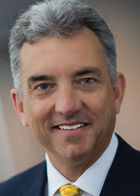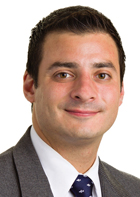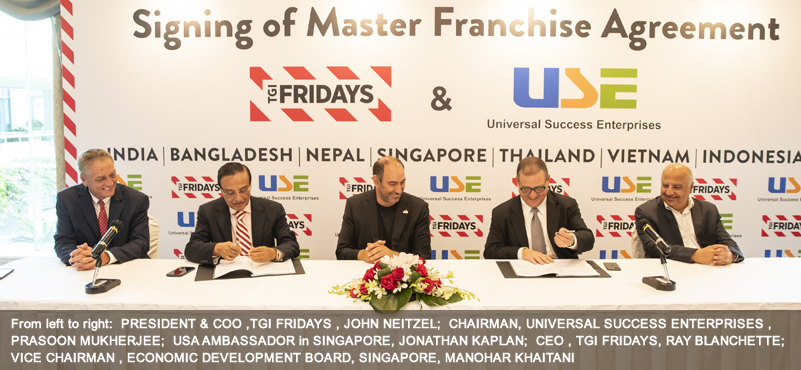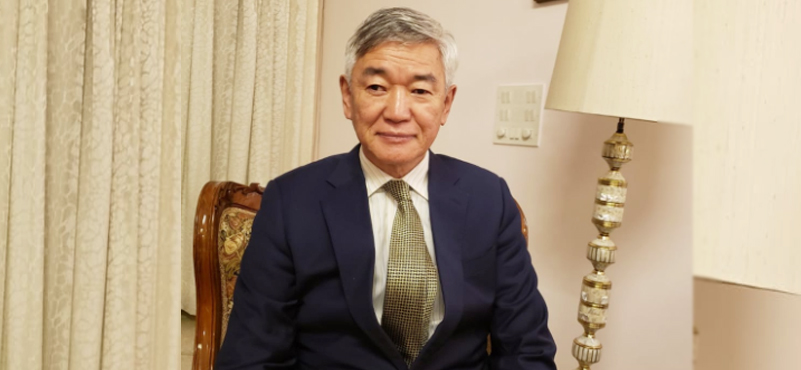Christopher L Thompson, President and CEO, Brand USA was in the capital recently. In a closed door media interaction, he discussed a range of issues that would have an impact on travel and tourism between the two countries. He also talked about how a well-envisaged PPP model of BRAND USA was pushing the US as a preferred destination for travel. A detailed interview.
On celebrating India-US tourism year in 2017
 That is what has been set for us on the table right now. President Obama and PM Modi have had a lot of discussions. It is intended to recognize the importance of two largest democracies in the world, and the importance of commerce and economic development – which could be mutually shared and otherwise expanded. It puts the bilateral relations on the high-level and provides commitment of resources. How it will look like is still being shaped out. It is the first time we have done it with India and our leadership is very excited about it.
That is what has been set for us on the table right now. President Obama and PM Modi have had a lot of discussions. It is intended to recognize the importance of two largest democracies in the world, and the importance of commerce and economic development – which could be mutually shared and otherwise expanded. It puts the bilateral relations on the high-level and provides commitment of resources. How it will look like is still being shaped out. It is the first time we have done it with India and our leadership is very excited about it.
Exciting times for the industry
When you have leaders of the two nations identify the importance of the industry that we work in everyday, it creates a focus and a stage to amplify what we are doing, in ways which we could not do before. When you talk about the travel and tourism industry in the United States, it is the largest service export. People do not realise that travel and tourism is an export of experience and memories that they take home with. It is 31 percent of everything that the United States exports. So we know the importance of the tourism industry. This government, in particular, has done more on this sector than any other administration has done before.
How the BRAND USA works
Our model, the way we are funding is through a lot of cash contribution. So, what we have done is that we have gone into markets and identify those that have communications and marketing channels that we are trying to reach. And we have formed partnerships, including some investment into the actual channel, and contributions that we are able to turn into our Federal government to get matching dollars for. It is a pretty tried and tested process that we have been refining for the last six years. It has worked very well for us. We have to bring in a hundred million dollars’ worth of contribution every year and we have been able to hit that mark, pretty much every year.
On budgetary allocations from the Federal government
Our government provides us a hundred million dollars, but for a dollar we have to bring in a dollar. So, that is the model we are talking about. We could bring in cash for cash and also in kind – it is valued in cash. And that is what provides us the overall budget that we are able to deploy around 30+ markets around the world.
Bullish on India!
The fact that we have the Secretary of State and Secretary of Commerce here – which has provided a great platform to be part of an overall dialogue between the two governments. We are very bullish on India as a market. The last year we witnessed some 1.2 million Indians as actual visitors who accounted for almost eleven billion dollars in money spent. It makes India eighth largest market in terms of dollars spent in United States.
Profile of Indian travellers and transformation therein
VFR (Visiting friends and relatives) still has a huge impact and is probably more compelling than any other market we have in the world. Simply because there is a great population of Indians in the US and whole impact of families visiting their children studying in universities add to it. Also, we have a substantial Indian population in major US gateways. The way VFR has changed is that a lot of people stay with their relatives for a short while and then venture out. There is a rise in number of people travelling for conferences and meetings.
But the dynamism happening around the world with the rise of millennial traveller is creating a major transformation.
Key source markets for the USA
Canada. One should not be surprised because we share a border. Mexico comes after that. Canada accounts for over twenty million visitors, whereas Mexico stands somewhere close. The United Kingdom is a large international source market, accounting for over five million tourists. Then we have several countries in the four and two million visitors bracket.
How the United Kingdom story is unfolding, especially after the ‘Brexit’ episode
It is still not sure how it will end up looking like. However, so far, anecdotally and otherwise, it does not seem to have a big imprint on numbers. The UK has been up significantly actually in 2015. So it is very mature and strong market for us.
Thoughts on the Chinese market
China is our fifth largest market in terms of numbers, just under three million. It is the top market in spending terms, it surpassed Canada. So, it has tremendous potential for us.
Challenges in taking the Indian outbound beyond major gateways and inculcating a sum total image of US in the minds of an average Indian traveller
Interestingly, by law and otherwise, the responsibility that we take very seriously is to promote tourism to those gateways, but beyond those gateways into states. Obviously, we are not going to ignore them. But as much as our friends in India think they know about the United States, there are even more things they are not aware of. And that is a big part of our mission, a big part of what we do. Our ability to do that is obviously greatly enhanced by the internet and our ability to aggregate destination information from our fifty states, five territories, District of Columbia and all the cities within the states. We layer in rich content on top of that which adds to story that they are telling, and amplifies it. For instance, this is the hundredth anniversary of our National Park, and we produced a big-screen IMAX film that premiered all over the world. It tells the story of the United Sates through a 43-minute film. BRAND USA was the one which could do that. It is a great example of how as the private sector, we were able to help our public sector partners at the Department of the Interior and National Park Service to amplify that centennial celebration.
And a lot of people not only know the gateways, but our friends in India and around the world know us for our National Parks. You think of any of things that are iconic and a majority of them are National Parks. So, that is what we are charged with. We are fully deployed in our marketing channels, so that would include our USA branding effort – which can be taken by traditional mediums like broadcasting on television, radio, print – and also digital and other mediums. We are directly involved in a lot of travel trade relationship. Anyone who facilitates travel to the United States, be it a tour operator or a travel agent. And a majority of where we spend our money, over half of it is in partnership with our destinations and our brands. So we take in our dollars and their dollars, with an agreed upon strategy to an agreed upon audience and market, and deploy resources, and in both cases those resources are extended beyond what either of us can do on our own. That is how our partners leverage their budget.
Our budget for this fiscal year, and maximum, is 165 million dollars. That is spread across 32-33 markets around the world where, again, we are fully deployed in our travel trade activities. In fact, we pioneered a few programs. We also have a training program – DISCOVER USA – which is great. So we are very active with the travel trade in India.
On planning to use Bollywood power to woo Indian outbound to the US shores
No direct plans there. But we are keen on bringing influencers to the table which would be people who are celebrity of some level. Who can help tell the BRAND USA story. In the fiscal year coming up, starting October first, it would be first time in those sixteen markets, including India, where we will be always on, through the digital platform. It means seven days a week, 365-days a year, we will have something going on at the digital platform. Then what else we do over and above that will depend on the market. What channels are available to us and how we are able to push in those resources in those markets.
On year-on-year growth in Indian numbers
It has been around 17 percent in 2015. So far in calendar ’16, in the first three months, I think it is up ten percent. So, we are still seeing healthy double-digit growth.
The other goal that was set by the President that we will host a 100 million visitors and clock 250 billion dollars in spend by 2021. We had 77.5 million visitors in 2015 and little over 220 billion dollars in money spend, so looking at the spend side, we have got another 23 and a half million visitors to find in the next five years. When that goal was set, we had a compounded annual growth of just under five percent. So far, we have been able to maintain, at least that more.
When you are operating in 30+ markets, around the world, there are a lot challenges that are out there. Currency exchange, not the least, which is certainly a challenge for us in Canada. So far we have navigated all those headwinds.
Challenges in India and in the larger developing market segment, compared to working in mature markets
To be honest with you, and now that I am in the market, I have always heard, read and learnt that USA is an aspirational travel for most our Indian visitors that can travel. So, I think it is not desire or intent, I think it has everything to do with access, and a lot of that has to do with air-service. We are very encouraged with the announcement this week by Air India expanding operations 6 flights from 3 into San Francisco. We met the CMD of Air-India and talked to him about potential new service they would be bringing to the table. There is just great opportunity to expand services.
I think, for me, the biggest challenge is to figure out how to accommodate the interest and intent, and channel it in an appropriate way. In an evolving market there is great potential to grow. We have so much opportunity to go beyond where we have traditionally gone, and speak to such vast audience who have never been to the United States – whether it is any demography.
Our main challenge in mature and traditional markets is that we have a pretty significant market share and, we have a world of competition that is vying for a larger share. Any experience that you can have in the United States, you can have it, probably, somewhere else in the world, may be closer home. But you cannot have the USA experience anywhere else but in the USA. It is about pop culture and things that our friends here in India have learned about us through movies and music. That is the advantage we have, but that does not mean we do not have staying on the top in our mind. So in mature markets, it is about protecting the established market share and in developing markets it is about the growth opportunity.
If you look at the size of the Indian outbound market, it is pegged to double or triple itself in the next few years. I guess the outbound is around 18-20 million and some of the most aggressive projections are suggesting that by 2020, it could reach 50 million. So we are hoping to get a lot of that growth.
India’s entry into the Global Visa Program and cumulative impact of measures on travel and tourism from India into the USA
It is an issue that is as much an Indian responsibility, as it is an American responsibility to figure out how to move things forward. It is also a great development that getting a US visa is not as tough as it used to be, say ten years ago. So there are a lot of positive developments. It is time of us to potentially meet those real aggressive numbers as far as growth in this market is concerned. It again all boils to convenience and connectivity. There are a lot of carriers in the market and, certainly, Air-India provides the non-stop service that people love to have.
So, I think that is probably the biggest hurdle in our ability to capitalize to level of potential growth in the market.
USA as a destination and its tourism offerings
What we know from most of our visitors coming different parts of the world, into the United States, that they consider travel as their birth right. So they are not going to stop travelling. They are just going to change their travel patterns. And that will not necessarily mean that they are not going to come to the United States, but they will change their trips to what their wallets can afford. It is a great situation to be involved in. The diversity of our tourism product to me is a strength and we so not have to tell that story.
Miami, for instance, has evolved as a great destination. All I have to do is to aggregate and be able to push it to clients who are interested in visiting the destination.
On making travel into the USA easier; facilitating faster document clearance
We have nothing to do with the delivery of those services. We have a national travel and tourism strategy – which is decoding the path to achieve 250 billion dollars’ worth of travel spent and 100 million international visitors by 2021. It was written in 2012. It is the bible, the document that the entire federal government follows, across none federal agencies as their contribution to that. The issue of travel documentation resides with the department of visa processing and embassies around the world.
It is much improved than what it was ten years ago. We are still working on the entry policy and we do have some challenges to address in our major gateways. But the good news in all of that is that the landscape of travel and tourism industry in Washington, as exemplified by the talks we have had here in India, is like nothing I have ever seen in 35 years of business. Where you have career service, DNA of these agencies do understand the importance of travel and tourism. They have a sense of purpose about hitting these goals. It has never been this way before. That kind of commitment was missing at the national level. And that is what is going to allow us hit the goal.
Thoughts on Brand USA as a model of Public-Private partnership and its utility for India. Could this be India’s way forward to a more concerted push to garner larger market share?
That is one of the reasons why I was invited to the Hindustan Times Leadership Summit held recently. They gave me an opportunity to come and share our story. If I look at the whole concept of a Public-Private partnership which is a Federal government, in this case, recognises the importance of travel and tourism industry and they should invest in it. We rally the private sector around the common effort. Some people say why does the United States need a national destination marketing organisation. The USA, what it represents, is almost intimidating. Our job is to umbrella all that there is in the United States and all the brands underneath it, and then take it out and package it. Not only in markets that a lot of our brand partners are active in, but in markets like China and India, that in many cases are new for a lot of our partners. It gives us a chance to do a pioneering role and assess the market and develop the opportunities.
I would suggest that it is a model that every country must look at. It really does leverage resources and does so in a way either of them could not do on their own. But I would never pretend to know what that means for India.
Our model creates sync between actual need and delivery on the policy front
Aaron Wodin-Schwartz, Director Public Policy, brand usa talks about how, on the policy front, a concerted effort to make best use of available resources was yielding rich dividends.
Tell us a little about the policy aspect of the BRAND USA. What does in entail?
 We are a public-private partnership and as the destination’s marketing organisation that differs from lot of the other organisations. PPP could mean a lot of things. It is the buzzword. We are an organisation created by a law by congress. President signed it in 2010. We work closely with department of commerce and the department of homeland security in communicating travel policies. The secretary of commerce is appointed in the board of directors. We have a finding mechanism that, basically, incentives the industry to contribute to the success of the national program.
We are a public-private partnership and as the destination’s marketing organisation that differs from lot of the other organisations. PPP could mean a lot of things. It is the buzzword. We are an organisation created by a law by congress. President signed it in 2010. We work closely with department of commerce and the department of homeland security in communicating travel policies. The secretary of commerce is appointed in the board of directors. We have a finding mechanism that, basically, incentives the industry to contribute to the success of the national program.
We do a lot of work with our federal partners, with embassies around the world, customs and border protection and National Parks – all the things that are the federal assets. That is what really separates us from any of the other destinations that promoting their state, or promoting their city. The channels and the content that the government can lend us, and some of our policies have taken full advantage of it.
Does the Private sector also invest in promotional activities?
Yes, it is primarily private sector. The way that it works is that the industry contributes to the success of the Brand USA through a variety of means – in cash and in kind – and we have a matching fund which is not a taxpayer fee, it is a fee on travellers from our visa waiver countries. So, they do not have to apply for visas, they sign up an online system and that creates a pool of money that we can access for dollar per dollar match, if the industry gets us the money. So, it creates an incentive for the industry to combine resources to promote the growth of the pie for everybody.
One of the benefits of this model is that all of our programs are useful to our industry partners which is a problem that, at the national level, some other countries have faced the shortfall between delivering on the actual needs for the industry and what was being planned on the policy front. We do not want that, and our tried and tested model ensures that our partners keep coming back every year.
Tell us about your partners
We have almost 600 partners. Every year they contribute to our success. We have a cap, every year, in the matching funds. The cap is a 100 million dollars. So we raise that amount of money from the private sector and then we are able to maximize – which is, probably, we have been able to do every single year. We have managed to maintain a retention rate of 94 percent which is fantastic. The majority of them are destinations within in the United States. These are California, Texas Tourism and NYC, and they see value in working with us. Our role is to add value to their businesses. We also have a great media and travel distribution partnership as well.




































